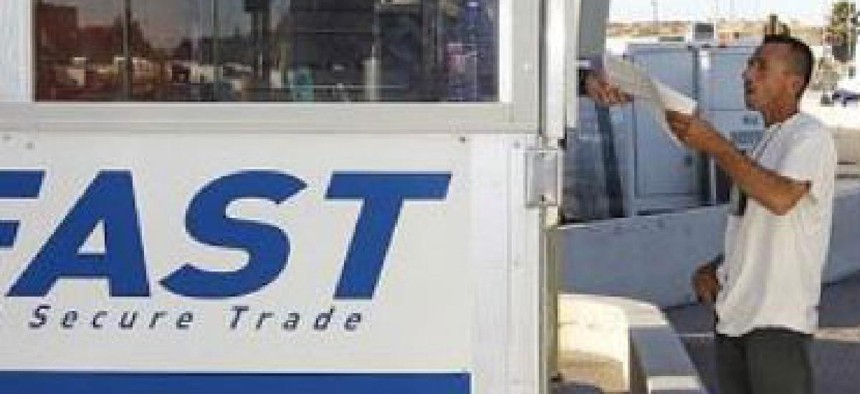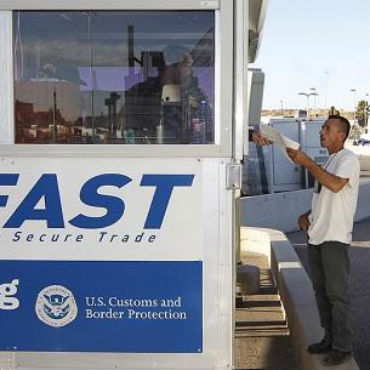CBP in-person interview slows entry process

Customs and Border Protection's programs for speeding travelers through line are yielding results, but getting people enrolled in the first place is slow going.

The Customs and Border Protection program to expedite trusted travelers is working well, but face-to-face steps in the application process continue to create bottlenecks. (Photo: CBP)
Customs and Border Protection's efforts to automate its expedited trusted traveler programs is working, but the human aspect of the program tends to slow it down, according to a study by the Government Accountability office.
Automated background checks for CBP programs like Secure Electronic Network for Travelers Rapid Inspection (SENTRI), Free and Secure Trade (FAST) and NEXUS trusted entry programs have largely proven successful, according to a GAO report, but the application vetting processes involving face-to-face processes such as interviews and briefings have proven more problematic.
While GAO noted the agency's expansion of airport-based self-service kiosks had helped accommodate the growing popularity of its trusted traveler programs, some of its less-than-high-tech processes were slowing it down. Enrollment in the programs has quadrupled over the last five years, with about 2.5 million travelers signed on. GAO said its analysis of CBP wait time data showed that at 11 out of the 14 border crossings with SENTRI lanes it studied, regular traveler vehicles waited at least 15 minutes longer on average than trusted traveler vehicles in fiscal 2013.
Interpersonal interactions, however, slowed the ability of agencies to get people into the program that speeds them through the lines.
"CBP has not assessed the feasibility of various other practices for improving efficiency in enrollment processes, such as conducting group briefings for applicants on the programs," said the report. "As of August 2013, CBP had a backlog of pending applications, as there were about 90,000 applications pending CBP vetting, and another 33,000 applicants who had not scheduled an interview."
GAO recommended CBP look for practices to improve application processing times and establish a mechanism to document types of interview questions asked.
The Department of Homeland Security's GAO-OIG Liaison Office Director Jim Crumpacker concurred with all recommendations but one: the need to establish a mechanism to document interview questions.
Crumpacker said CBP shouldn't use scripted interview questions because they would limit interviewers' latitude in determining applicants' eligibility and possibly force lines of questioning and additional steps that might not be warranted.


